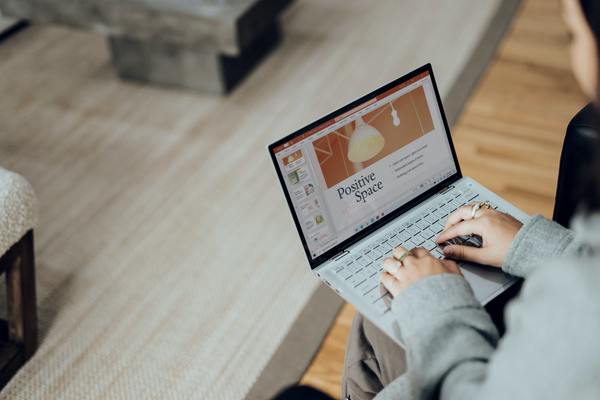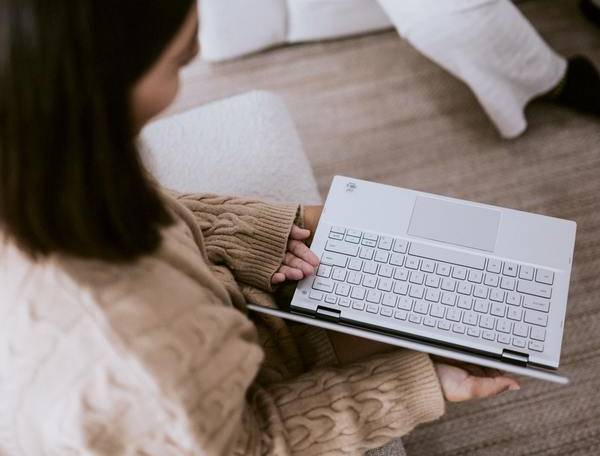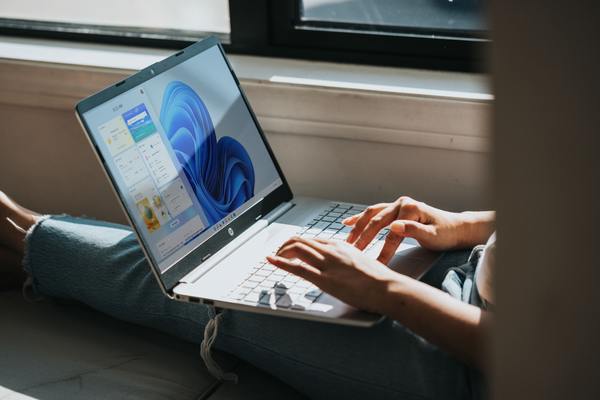This post will show you Windows 11 keyboard shortcut list, including the new Windows 11 hotkeys along with the full list of keyboard shortcuts available in the newest OS. Among the family of operating systems, Windows 8 was the first system in which specially adapted to touch screens. At the same time, it included new combinations of hotkeys, sharpened for working with touch screens. However, previously unused or reassigned keyboard shortcuts appear in almost all new versions of Windows. They also appeared in Windows 11, although at the moment there are only four of them.

New Windows 11 hotkeys
⊞ Win + A
In Windows 10, this combination opened the notification panel. In the eleventh version, pressing the ⊞ Win and A keys at the same time will bring up the quick settings panel with the tiles “Night light”, “Focus attention”, “Wi-Fi connection” and so on, as well as with an adjustment slider for brightness. By the way, Windows 8 and 8.1 do not have this hotkey combination.
⊞ Win + N
A new keyboard shortcut that is not used either in Windows 8.1 or in Windows 10. In the eleventh version of the operating system, the developers have assigned it to the Action Center, combined with the calendar.
⊞ Win + W
The keyboard shortcut ⊞ Win + W was used brings up the search bar in the “Options” category in Windows 8. In Windows 10 it opens the “Windows Ink Workspace” tool for drawing on tablets or laptops with a touch screen. But in Windows 11, it has a different purpose. When you press this combination in Windows 11, a widget panel will open in the left area of the screen – tiles with rates of leading stock indices, weather reports and current news.
⊞ Win + Z
Another new, previously unknown and unused keyboard shortcut. In Windows 11, it is assigned to the Snap Layouts panel – the layout of windows on the screen. Like all arrow button combinations with the Win button, the ⊞ Win + Z combination is global, but it only works for the active open window.
So far, this is all that has been discovered. But since Windows 11 is under active development, we assume that other, interesting and useful keyboard shortcuts will appear in the OS soon.
Now, let’s review the full list of keyboard shortcuts available in Windows 11.

Windows 11 keyboard shortcuts – the full list
| Shortcut | Actions |
|---|---|
| Ctrl + ⇧ Shift + ← and click app icon | Launches the application as administrator from the taskbar |
| ⊞ Win + Home | Minimize or restore all windows except the currently active window |
| Ctrl + C | Copy the selected items or text |
| Ctrl + Z | Undo the recent action(s) |
| ⊞ Win + ⇧ Shift + ↓ | Stretch or place the active window to the top of the screen |
| ⊞ Win + ⇧ Shift + ↑ | Stretch or place the active window to the top of the screen |
| Alt + F4 | Closes the active app or window; or, If you are on Desktop, opens the classic Shut down windows dialog box. |
| Esc | Exits or cancels the current task |
| ⊞ Win + 1 | Opens the app in the first position on your taskbar |
| Ctrl + A | Selects all text contents in the document or dialog |
| Alt + F8 | Displays the entered password on the login screen |
| Ctrl + ⇧ Shift | Switch the keyboard layout and input language |
| Alt + Spacebar | Opens up the window actions menu for the current window |
| ⊞ Win | Opens the Windows 11 Start menu |
| Ctrl + P | Sends the current page to the printer |
| Ctrl + X | Cuts the files or text you have selected |
| Ctrl + O | Opens a file in the active program if it supports opening files |
| Ctrl + ⇧ Shift + S | Save As function- lets the user save a copy of the current document at a new location or with a different name |
| Alt + Tab ⇆ | Switch between the open apps |
| ⊞ Win + ← | Moves the current window to the left side of the screen |
| ⊞ Win + M | Minimizes all open windows, but doesn’t move the focus to the desktop, unlike ⊞ Win +D |
| Ctrl + S | Saves the current document |
| Alt + ↵ Enter | Brings up properties for a selected file or folder |
| Shift + Delete | Deletes the item permanently |
| ⊞ Win + Alt + D | Views Date and Time along with calendar |
| Alt + ← | Goes to the previous screen; if you are on the web, goes to the previous web page or site you had opened in the current tab |
| ⊞ Win + X | Opens the Start button’s context menu. |
| PrtScn or Print | Captures a full-screen screenshot and keeps it in the clipboard |
| ⊞ Win + I | Opens the Windows 11 Settings app |
| ⊞ Win + L | Locks the computer and displays the Lock screen |
| F10 | Activates the menu bar of the current window or app, where available. |
| Ctrl + Arrow keys + Spacebar | Choose multiple items in File Explorer |
| ⇧ Shift + Arrow keys | Select multiple items or to select text |
| Ctrl + Delete or Delete | Deletes the selected items and moves them to the Recycle Bin |
| F11 | Enter or exit the full-screen mode |
| Alt + F10 | Opens the context menu(right-click menu) for a selected item |
| ⊞ Win + Tab ⇆ | Opens Task View to view all open tasks, windows, and virtual desktop |
| Ctrl + N | Creates a new document |
| ⊞ Win + → | Places the current window to the right side of your screen |
| ⊞ Win + ⇧ Shift + S | Allows users to capture part of the screen with Snip & Sketch |
| Alt + Esc | Switch between the apps on the taskbar |
| ⊞ Win + R | opens the Run window |
| Ctrl + V | Pastes the items you have copied or cut |
| ⊞ Win + . (period) or ⊞ Win + ; (semicolon) | Opens the Emoji keyboard |
| ⊞ Win + D | Minimizes all windows and puts the selection to the desktop |
| Alt + → | Goes to the next screen; if you are on the web, goes to the next web page in the browsing history |
| Alt + Page Up | Move up to the parent folder in Explorer |
| Alt + ⊞ Win + number keys | Open the application’s menu (jump list) on the taskbar |
| Ctrl + Y | Redo the action you have undone with Ctrl+Z |
| F5 | Refreshes the active screen |
| Alt + Page Down | Move down one screen (Use this to go down faster) |
| Alt while dragging icon or file | Create a shortcut |
| ⊞ Win + S or ⊞ Win + Q | Opens the Windows Search |
| ← Backspace | Opens up the parent folder in Open/Save dialogs |
| Tab ⇆ | Move through buttons and options in a window |
| F4 | Expands the combo-box (drop-down list). In File Explorer, expands down the address bar. |
| ⊞ Win + ⇧ Shift + ← or → arrow keys | Moves an application or a program window from one monitor to another if multiple displays are connected |
| ⊞ Win + Alt + PrtScr | Takes a screen shot of the active window |
| ⊞ Win + Alt + G | Records up to 30 seconds of the currently active game |
| Spacebar | Checks or unchecks the current check box, or selects an item in the list. |
| ⊞ Win + Alt + R | Starts or stops recording the active game or app. |
| ⊞ Win + Y | Swaps the input control between the Windows desktop and Mixed Reality. |
| ⊞ Win + G | Opens the Xbox Game bar |
| ⊞ Win + C | Launches the Cortana feature |
| ⇧ Shift + Tab ⇆ | Goes back through buttons and options in a window |
| ⊞ Win + K | Opens the ” Connect to ” setting |
| ⊞ Win + / | Launches the IME re-conversion |
| ⊞ Win + O | Locks the screen orientation on tablets |
| ⊞ Win + H | Launches the voice dictation features. |
| ⊞ Win + Spacebar | Switches between the input languages and keyboard layouts |
| ⊞ Win + Pause | Displays the About System page in the Settings app |
| Ctrl + ⇧ Shift + Tab ⇆ | Go back through tabs if there is a tab control. |
| ⊞ Win + F | Opens the Feedback Hub to provide feedback (for Insiders) |
| Arrow keys like ↑ ↓ ← → | Go to the next item, file or control in a window. |
| ⊞ Win + V | Opens the Clipboard History window |
| Ctrl + Tab ⇆ | Goes forward through tabs if there is a tab control. |
| Ctrl + numbers (1 –9 ) | Goes directly to the tab # if there is a tab control. |
| ⊞ Win + Alt + T | Shows or hides recording timer of the game for the game recorder. |
Also, there are virtual desktop shortcuts you may find useful to manage your desktop shortcuts faster.

Windows 11 keyboard shortcuts for Virtual Desktops
| Shortcut | Actions |
|---|---|
| ⊞ Win + Ctrl + D | Add a new virtual desktop |
| ⊞ Win + Ctrl + → | Switch between to the virtual desktops you’ve created towards the right |
| ⊞ Win + Ctrl + F4 | Closes the current (active) virtual desktop |
| ⊞ Win + Ctrl + ← | Switch or toggle between the virtual desktops you’ve created towards the left |
Also, here are useful keys you may like to use in File Explorer. Here are the Windows 11 keyboard shortcuts for File Explorer.
File Explorer hotkeys
| Shortcut | Actions |
|---|---|
| Ctrl + M | Turns on the check mark mode |
| End | Move to the bottom of the file list |
| Alt + → | Goes to the next folder in the browsing history |
| Alt + ↵ Enter | Opens the Properties dialog for the selected file or folder |
| Ctrl + Mouse Scroll | Changes the folder view, e.g. large icons, small icons, list, table. |
| Home | Goes to the top of the file list |
| Num Lock + Minus (-) | Collapse the selected drive or folder |
| Alt + ↑ | Goes up to the parent folder |
| ⊞ Win + E | Opens a new File Explorer window |
| Ctrl + W | Closes the active Explorer window |
| Ctrl + Shift + E | Expands all the sub-folders available in the navigation pane |
| Alt + P | Displays the preview panel |
| F4 | Activates the address bar |
| Alt + ← | Goes to the previous folder in the navigation history |
| Num Lock + plus (+) | Expands the selected drive or folder |
| F6 | Switch between the left and right pane |
| Ctrl + E | Activates the search box in File Explorer |
| Ctrl + ⇧ Shift + 1-8 | Changes the folder view |
| Alt + D | Activates the address bar in File Explorer |
| Ctrl + N | Opens up a new window of File Explorer |
If you are using the classic Command Prompt, you will find the following Windows 11 keyboard shortcuts for cmd.exe useful.
Command Prompt keyboard shortcuts
| Shortcut | Actions |
|---|---|
| Ctrl + ↓ | Scrolls the output down per one line |
| Ctrl + ↑ | Scrolls the output up per one line |
| ⇧ Shift + ↓ | Select the text by one line down |
| Shift + Home | Moves the cursor to the beginning of the current line |
| Ctrl + A | Selects everything in the current window |
| ↑ or ↓ arrow keys | Cycles through commands executed in the current session |
| ← or → arrow keys | Move cursor left or right in the input line |
| Ctrl + Home | Scrolls the output to the topmost line |
| ⇧ Shift + End | Selects the current line from the cursor position to the beginning of the line |
| ⇧ Shift + ↑ | Selects the current line from the cursor position to the end of the line |
| Ctrl + End | Scrolls the output to the last line |

You can peak at the desktop using the following shortcut:
Win + ,
Thank you sir.